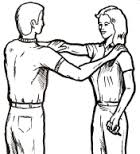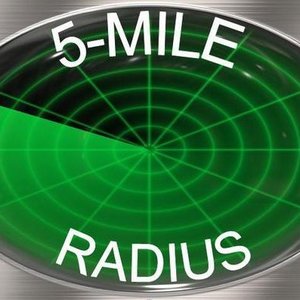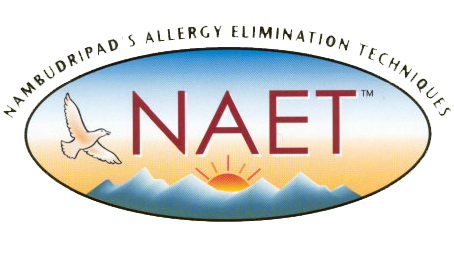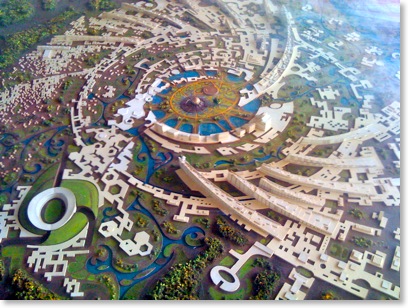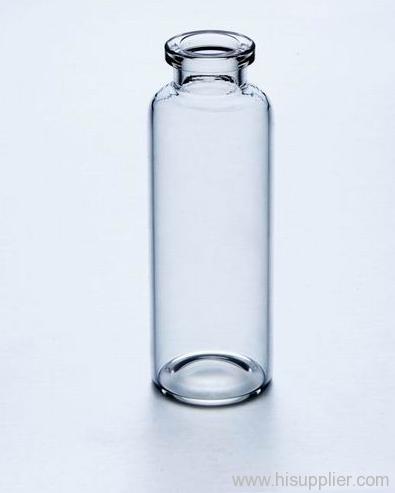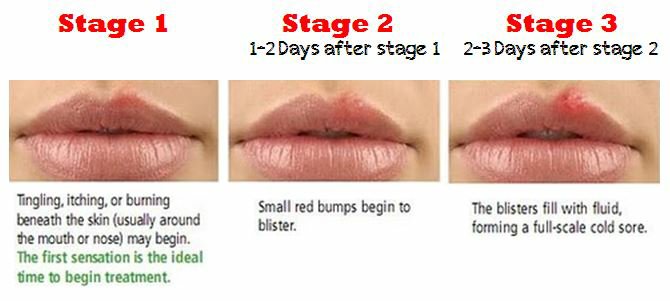Alternative healing
Creating a healing atmosphere within centres and for a spiritual community: an investigative study — III
Abstract
The preceding parts describe how the healing atmosphere, known as the Integral Bio-Energetic Field (IBEF), was developed, activated and induced into four centres and Auroville. The current article evaluates IBEF based on case reports and indicators of applied kinesiology. Prior to IBEF induction, every subject at the centres and Auroville was shown to have at least one allergy reactivity/sensitivity or related disorder at existing and/or preventive levels. Following IBEF induction, the previously detected allergy or disorder was cleared and eliminated for all subjects.
Induction
As detailed in Part 2, a five-step procedure for inducing IBEF was applied to four centres in northern California and for the Auroville spiritual community in south India. Four months later, IBEF was induced at three additional centres in northern California. Its existence at the centres and Auroville was verified by the investigator with a bio-energetic muscle-testing technique referred to as ‘question-response testing’ (QRT). Described in Part 1, QRT applies a form of muscle-testing to obtain a 'Yes’ or 'No' answer for a stated question about healing or wellness status. Based on degree of muscle strength, the testing results in either a relatively strong muscle response meaning 'Yes' or a weak muscle response meaning ’No’.
Healing benefit
As shown by the case reports in Appendix 1, the healing atmosphere at the centres addressed a wide range of allergies and related disorder reactivity, including acute and chronic conditions.
Case reports 1 and 2 pertain to two female subjects who had been suffering often from seizures. Following their IBEF exposure, however, the seizures were eliminated for one subject (Allison) and greatly reduced in frequency and severity, for the second subject (Lupe).
IBEF healing benefits are also demonstrated in other case reports of Appendix 1 in conjunction with various IBEF dynamics defined and examined.
Linkage
Muscle-testing techniques have shown that an overall connection exists among IBEF centres. Given such linkage, when a healing component is added to one centre, it can then also be detected for all of the other centres, as well as for Auroville.
To broaden detection methods, a second technique, known as ‘pre-determined muscle-testing’ (PDM), was applied. Detailed in Part 1, PDM can be briefly described as follows. The practitioner gently presses on the client's wrist while the latter extends his/her arm and holds the suspected allergy substance. Relative muscle weakness indicates an allergic reaction, while strength discloses a non-allergic condition.
The linkage dynamic is revealed in the following example, described more fully in case report 3. Shortly after initial centre inductions, the investigator found, based on QRT testing, that one of the centre's seven IBEF core elements, known as ‘brain-body-field' (BBF), was no longer active. What is the nature of BBF? When functioning at a normal level, BBF energy is harmonised and flows easily between the physical body and brain. However, if found to be blocked or flowing below the normal level, BBF can then be re-activated by re-inducing it into a centre.
Before attempting to re-activate BBF, the investigator first PDM-tested, using a BBF vial, a volunteer subject at each of two IBEF centres. Their negative (weak) reactions confirmed that BBF was non-functional at both centres. He then induced BBF at one of the two centres. Upon re-testing the volunteers at the two centres, he obtained positive (strong) reactions for both of them. This result, in effect, confirmed that BBF had been transferred from the first centre, where BBF had been induced, to the second centre. In other words, a detectable linkage dynamic appears to exist between centres.
Extend mode
QRT-testing has shown that the healing atmosphere can be extended about 5 miles beyond the IBEF centre. Longer distances may be feasible and will be explored in future studies.
The extend mode is advantageous because an IBEF centre's healing energy can be widened to encompass one's home if located within five miles of the centre. The mode firstly needs to be activated as follows:
1. Ask for Guidance by Divine Mother to activate the Extend mode.
2. QRT, asking: “Is the IBEF extend mode currently functioning for the (name) centre?” If ‘Yes', no further steps are needed; if 'No', apply the next steps.
3. Say: “IBEF” at least 5 times; then, state: “May the extend mode be activated for the (name) centre”.
4. Repeat 2: expect ‘Yes' answer. If 'No', do 1 to 4 again.
5. Optional verification: after activating the mode for a centre, PDM-test a recipient, who has not attended an IBEF centre and resides more than 5 miles away, for his/her known allergy(using its vial or substance sample). Expect: PDM weakness. Next, ask the recipient to visit a location within 5 miles of the centre. PDM-test again for his/her allergy. Expect: PDM strength, i.e. elimination of the prior allergy.
A brief example,detailed in case report 4, follows. A 59-year-old woman named Eleanor, residing within 5 miles of an IBEF centre, had been diagnosed with herpes 1 and 2, and was having painful, recurring symptoms. Accordingly, the investigator induced a herpes vial energy into the nearby IBEF centre for its healing emanation. He then activated the extend mode for the centre. Shortly afterwards, Eleanor called him and said that her symptoms had virtually ceased. Hopefully, she will continue to receive healing benefits from the nearby IBEF centre via its extend mode.
Reset mode
One of the methods used for this mode detailed in Part 1 is the ‘Nambudripad allergy elimination technique’ (NAET). It is a system for detecting and clearing allergies by applying the principles of Oriental medicine, chiropractics, and homoeopathy. Numerous peer-reviewed experimental studies have been conducted and published, substantiating NAET's effectiveness.
NAET’s scope extends beyond the medical definition of allergies to include any bio-incompatible substance and condition resulting in energetic imbalance, such as pathogens, toxic elements as well as allergic reactions between two persons. NAET uses PDM muscle-testing for the suspected allergic substance, represented by vials filled with water, computer-energised for the allergen.
As explained in Part 2, the IBEF needs to be reset periodically after its initial induction, with a repeated induction at a centre. The reset is necessary after the 1st week, 2nd week and monthly thereafter.
The monthly reset was recently implemented at the IBEF fitness centre, with the help of a staff volunteer (Allison). In order to verify its activation, Allison was tested on three criteria before and after the reset. The first two criteria involved PDM-testing of a) the IBEF vial (its development explained in Part 2); and b) a NAET vial for calcium. Prior to the reset, before it was needed, both vials PDM-tested as 'strong', indicating their components existed in the centre's IBEF atmosphere. Later on, when the reset was necessary, Allison tested 'weak' on both criteria. Thereafter, however, following application of the reset, she tested 'strong' again on the two criteria.
The third criterion utilised was the 'overall wellness' (OW) percentage (as detailed in Part 2). Upon applying QRT, OW can be regarded as an estimate of the percentage extent of balanced functioning of bodily systems and their components. Preferably, OW would be repeated for 3 days sequentially, so as to obtain an average measure.
It should be noted that Allison's OW before versus after the reset increased from 80% to 100%.
Viewed overall, the above test re-test results based on the three criteria served to verify the completion of the reset.
VIFI
As explained in Part 2, (VIFI enables the practitioner to transfer/transmit healing energy from an IBEF centre to a recipient. The VIFI letters stand for the four steps of the procedure:
1. Visioning a certain IBEF centre or a location within Auroville;
2. IBEF: saying “IBEF” aloud 5 times to engender its healing energy;
3. Focus: on standing or sitting at a specific place within the centre or within Auroville;
4. Identify: the recipient by name who is to receive the IBEF healing.
Example
Chris, a 21-year-old man, was shown by QRT-testing to be allergic to sugar without obvious symptoms. Thereafter, his allergic reaction was addressed and cleared with VIFI by the investigator's assistant, Jasmin, who had been trained to apply the procedure. The investigator then re-tested Chris, using both QRT and PDM; he found that the sugar allergy was cleared, verifying that VIFI had been effective.
A more detailed example is given by case report 5 in Appendix 1.
Pre-post testing
The study was comprised of 54 subjects: 31 from northern California who attended the centres and 23 who resided in Auroville. All subjects were tested before and again after the initial IBEF induction. Centre subjects were tested directly with PDM, while QRT was employed for the Auroville subjects (each time stating the subject's name). The procedure was done twice: 1) for existing allergy or related disorder reactivity/sensitivity; and 2) for preventive allergy/disorder reactivity. Each time, four steps were applied as follows:
a. Centre subjects were PDM-tested directly, while holding the IBEF vial. Auroville subjects were (distant) QRT-tested, stating the name of each subject with the investigator holding the IBEF vial on behalf of the subject.
b. If no reactivity (weakness) was detected, the investigator added an 'Amplifier 1' vial for more sensitive testing; if still no reactivity, he added an 'Amplifier 3' vial and re-tested. The Amplifier. Vials had been electronically coded to enhance/amplify the testing to be used together with a regular vial, while testing for allergic reactivity/sensitivity. There are five Amplifier vials; the investigator ascertained that, based on QRT, optimum results would be produced with Amplifiers 1 and 3.
c. If still no reactivity, he added a homoeopathic Epiphysis vial for even more sensitive re-testing.
Upon applying the above procedure, every subject was found to have a degree of allergic reaction/sensitivity to one or more substances or related disorders. In other words, the pre-tests revealed allergic or disorder reactivity on a bio-energetic level for all subjects.
Pre-test characteristics
Tables 1 and 2 (Appendix 2) summarise the extent and variety of allergic reactivity and related disorders for subjects prior to IBEF induction at the centres and Auroville.
Table 1 discloses the percentages of subjects who were allergic/reactive to one or more substance. Of the 31 centre subjects, 24 or 77.5% showed reactivity to one, 12.9% to two, and 9.2% to three or more substances. For the 23 Auroville subjects, 18 or 78.3% showed reactivity to one, 21.7% to two, and none to three or more substances. To summarise, the centre subjects showed a slightly higher allergic reactivity to multiple substances more often than Auroville subjects.
Table 2 focuses on the types of allergic reactivity for eight categories based on the above testing procedure, a) to c).
Viewed overall, centre subjects had com-paratively more allergic reactions (48) than obtained (29) for Auroville subjects. Among the eight categories, centre subjects were slightly more reactive to foods/nutrients (58.3%) than Auroville subjects (48.2%). Auroville residents, however, were more allergic/reactive to pesticides (24.1%) than centre subjects (8.3%). The higher percentage might reflect that Auroville residents were more often exposed to fields with pesticide presence.
Pre-post results
As already stated, subjects were tested both shortly before and soon after IBEF induction into the centres and Auroville. The pre-post results indicate that after IBEF exposure all subjects were cleared of detectable allergies or related disorders both on existing and preventive levels. The healings are mainly attributable to IBEF exposure in terms of centre attendance and Auroville residence.
Conclusion
In light of these favourable results, IBEF can be regarded as a promising healing approach. Being an exploratory study however, the before-after findings should be viewed as preliminary rather than conclusive with additional research to be pursued.
Several major implications might be con-sidered. Firstly, future studies may need to emphasise IBEF addressing chronic disorders, such as cancer and cardiac conditions. For example, the IBEF expansion procedure detailed in Part 2 could receive special attention. It would be applied in 6 steps, involving successive healing stages. During the initial stage, a vial for the chronic disorder would be induced into the centre. Shortly thereafter its healing effect would be measured based on QRT for its ‘disorder effect‘ (DE) percentage or extent of disorder. Thus one would expect the DE percentage to be higher (perhaps 75%) for a chronic disorder. For each stage, the procedure would be repeated using the same or a related vial until the DE percentage for the last stage would be greatly reduced close to 0%.
A second implication, proposed in the Conclusion of Part 2, envisages setting up IBEF centres within urban areas of poverty and instability. Thereby, IBEF energy could be extended to critical areas to expand healings, reduce existing adverse forces and enhance collective ‘goodness‘. A small élite team of volunteers could be trained to maintain the centres, as well as evaluate their short-term and eventual impact.
In addition, this 'cadre' of volunteers might develop strategies for IBEF’s collective healings of pandemics and epidemics — such as ebola, typhoid fever and malaria — in rural areas, towns and cities of designated countries. The strategy impact could be assessed by means of case reports, interviews and health department statistics.
Appendix 1: case reports
Case report 1: IBEF healing
A 28-year-old woman (Allison) is a staff member at a fitness centre, where the IBEF healing atmosphere was first induced. Prior to IBEF, for 9 years, she had been having symptoms of a chronic disorder involving seizures several times a week. The medical diagnosis was non-specific, but her doctor prescribed a medication, which she is still taking as a precaution. After the initial seizures, Allison's driving license was withdrawn and she became more cautious in her daily life. Recently however, soon after IBEF was introduced at the fitness centre, Allison no longer manifested any disorder symptoms. She does not have seizures and feels healthier and more energetic. Her driver's license has been restored and she is driving again daily, including the occasional long-distance car trips
Case report 2: additional IBEF healing
A 24-year-old woman (Lupe) had been having chronic seizure symptoms since early childhood. Every 1-2 days, she would suffer from shaking, sweating, vomiting and crying. Recently, following her visit to the restaurant where IBEF had been induced, Lupe's condition greatly improved. The seizures presently occur much less often (every 1-2 weeks) and are less severe. Bio-energetic analysis and QRT by the investigator indicated that Lupe's disorder had largely been caused by an allergic reaction to pesticides, which was thereafter eliminated by IBEF exposure.
Case report 3: linkage
After inducing IBEF at the centres and Auroville, the investigator found, using QRT, that a core element, ‘brain-body-field’ (BBF), was not functional at a particular place (a fitness centre). BBF represents a harmonised flow of energy between components of the physical body and the brain. If the flow is inadequate/not detectable, BBF can be re-activated by re-inducing it into an IBEF centre.
In re-activating BBF, the investigator saw this case as an opportunity to demonstrate the linkage dynamic. The latter involves the induction of a component into a centre followed by its apparent energy transfer (linkage) to other IBEF centres.
In order to demonstrate linkage, the invest-igator visited firstly another IBEF centre (an Indian restaurant) and asked a friend-waitress (Simran) for assistance to be PDM-tested, while holding the BBF-vial. The aim was to determine whether BBF was present or not at the centre. Simran's RDM-testing showed weakness so BBF was not detectable at the centre.
The next day, the investigator visited the IBEF fitness centre and repeated the testing with a staff member volunteer (Willie). When holding the BBF vial his PDM-test showed weakness, which verified that BBF was not present. Afterwards, the investigator induced BBF at the IBEF centre and PDM-tested Willie again. This time, his testing showed strength, indicating that BBF had been successfully induced at the fitness centre.
Later on, the investigator returned to the restaurant and re-tested Simran. As expected, she now showed PDM-strength, indicating that BBF was present at the restaurant centre. Thus the BBF-vial induction of healing energy had apparently been transferred from the fitness centre to the restaurant and presumably to all the centres and Auroville — in effect, linking their IBEF fields.
Case report 4: extend mode
Residing within 5 miles of an IBEF centre, a 59-year-old woman (Eleanor) had been diagnosed with herpes 1 and 2 with recurring symptoms. QRT confirmed that she was currently suffering from herpes symptoms and would benefit from bio-energetic treatment. To facilitate the healing, QRT indicated: a) the generic herpes vial's energy would need to be induced into the centre; and b) the extend mode should be activated — for the IBEF energy to be widened to encompass Eleanor's home. The investigator thereby carried out steps a) and b). Soon after he completed the procedure, Eleanor called to inform him that her symptoms — persistent pain in the female area, and a feeling of sickness — had virtually disappeared and that she felt almost normal again. The investigator's QRT verified that Eleanor's herpes disorder had become dormant, but still required long-term healing, to be facilitated by the IBEF Extend mode. It should be noted that, based on QRT, her immune system had previously been functioning below a 50% level, but after the IBEF had healing increased to a 90% level.
Case-report 5: VIFI
The case involves a 50-year-old man (John), who frequently had skin eruptions of redness on his face, scalp, and neck. This was especially detrimental for him, being employed as a public speaker. A PDM-scan by the investigator indicated that he had multiple bio-energetic disorders. These included: a) Staphylococcus bacteria; b) excessive toxicity; c) allergies to salt and spices; d) miasmic reaction (at homoeopathic level) to radiation; and e) adverse energy in the form of an entity.
John received two kinds of energy healings: 1) Attending an IBEF centre, together with the investigator; and 2) thereafter, several self-administered VIFI applications during a one-month period. Subsequently, PDM-testing by the investigator revealed that John's prior symptoms, a) to e), had been cleared and were no longer detectable.
Appendix 2: tables
Table 1
Number of substances to which subjects were allergic prior to IBEF induction in California centres and Auroville
No. of substances |
Calif. (n= 31) |
Auroville (n=23) |
One Two Three Four Five or More |
77.5% 12.9% 3.2% 3.2% 3.2% |
78.3% 21.7%
|
Total: |
100% |
100% |
Table 2
Allergic reactions by category (prior to IBEF induction) for subjects of California centres and Auroville
Categories: |
N. Calif. |
Auroville |
Foods Nutrients/vitamins Body organs Pathogens Chronic disorders Heavy metals Radiation Other toxicity Total allergies, (N) subjects |
17 11 4 4 2 4 2 4 48 (n=31) |
14
2 4
2
7 29 (n=23) |
Foods: sugar, chocolate, spices, grains, additives. Nutrients: vitamin A, vitamin C, chlorides. Body organs: kidney, heart, pancreas, prostate. Pathogens: virus, bacteria, fungus, miasms, calcium, yeast. Chronic disorders: diabetes, cancer, multiple sclerosis, muscular dystrophy. Heavy metals: mercury/ amalgam, silver, gold. Radiation exposure: cell phones, computers. Other toxicity: pesticides, petroleum.
Joachim P. Seckel, M.A., Acupr., NAET is a researcher based in Albany, California.
Share with us (Comments,contributions,opinions)
When reproducing this feature, please credit NAMAH,and give the byline. Please send us cuttings.


